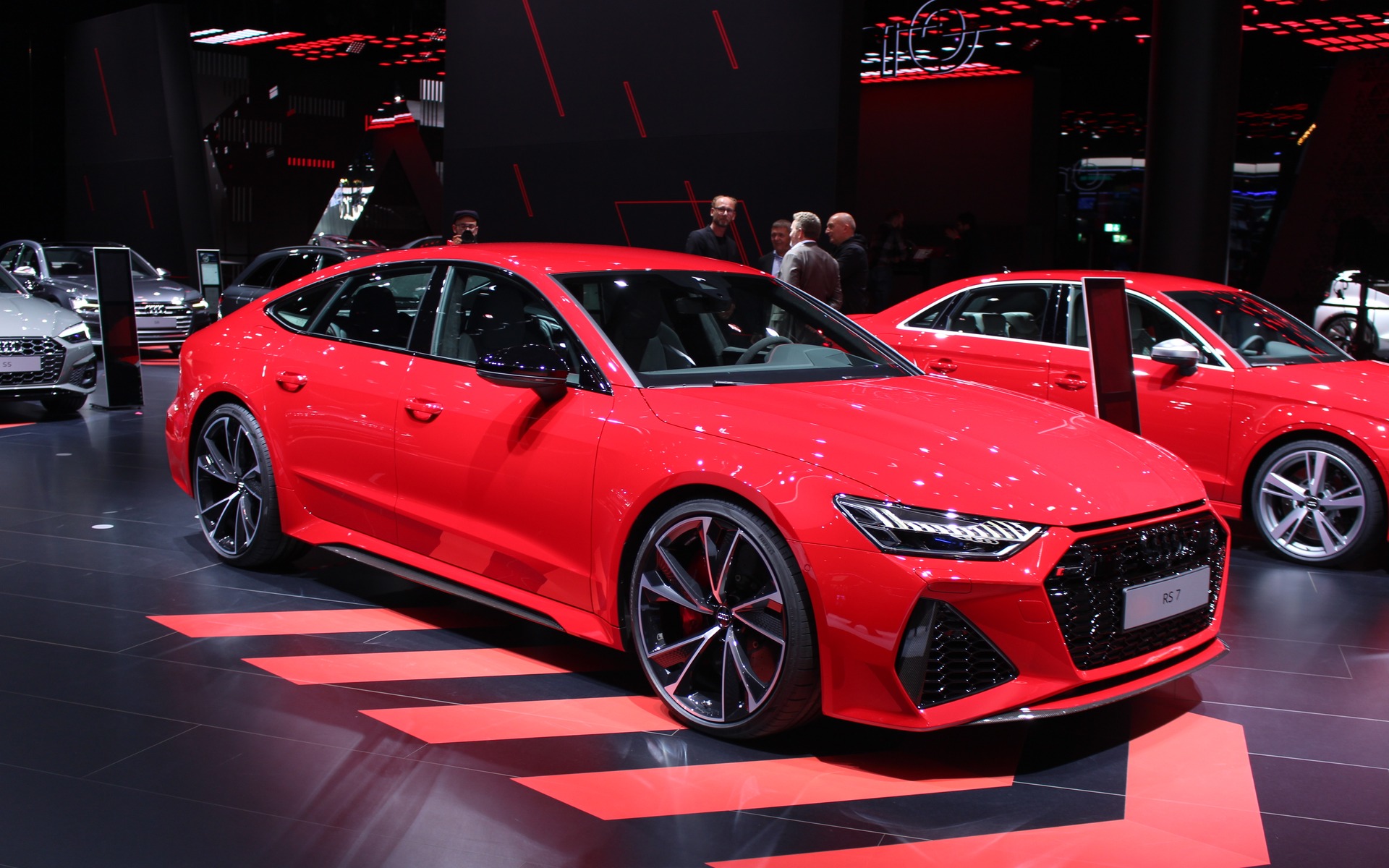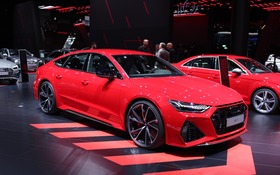2020 Audi RS 7 Unleashed with a 590-hp Twin-turbo V8
The second-generation Audi RS 7 will go on sale in Canada sometime in 2020 as the mightiest expression of the A7 Sportback.
Under the hood is a twin-turbocharged V8 engine rated at 590 horsepower and 590 pound-feet of torque. An eight-speed ZF automatic transmission and Audi’s quattro all-wheel drive complete the powertrain.
- Also: Audi AI:TRAIL quattro Concept Turns Heads in Frankfurt
- Also: 2020 Audi RS 7 Sportback: Powerful, Dynamic and Stylish
This wicked five-door sedan accelerates from 0-100 km/h in 3.6 seconds, according to Audi engineers, which is three tenths of a second quicker than the previous model. Buyers can choose to have top speed set at 250 km/h, 280 km/h or even 305 km/h.

If Looks Could Kill
The new RS 7 retains the coupe-like silhouette of the A7, but it looks much more athletic thanks to a few elements borrowed from the R8 sports car, most notably the lower and wider grille with oversized air intakes on each side.
The body is 40 millimetres wider overall since the fenders need to accommodate the available 22-inch alloy wheels. By the way, customers have a selection of black, silver and titanium-finished wheels.
The rocker panels, doors, rear fenders, rear bumper and twin tailpipes are all specific to this model. As you can see on the pictures, the redesigned RS 7 is heavily inspired by Audi cars in the DTM championship.

RS 1 and RS 2 Modes
As soon as you settle in the heated and ventilated super-sport seats, you’ll notice that the multifunction sport steering wheel comes with a new RS button for switching to RS1 or RS2 mode. This allows the driver to create two distinct profiles.
For example, you can dedicate RS 1 to the most aggressive settings for the engine, transmission, suspension, steering and all-wheel drive while choosing softer settings in RS 2.
Either way, you have the ability to radically transform the personality of the Audi RS 7 at the simple push of a button (similar to BMW’s M1 and M2 buttons).

Mild Hybrid Technology in the Mix
The 2020 Audi RS 7 features a mild hybrid system in the form of a belt-driven alternator-starter and a 48-volt battery. This allows the car to coast silently for up to 40 seconds at speeds between 55-160 km/h.
The system improves fuel economy on the highway, much like the cylinder deactivation technology that shuts off four of the eight cylinders when cruising under light load.

Two Types of Suspension
With regard to the ride and handling, there are two types of suspension to choose from with the RS 7—both governed by the Audi Drive Select system and its various drive modes.
The first is an air suspension with electronically controlled dampers. It works with a four-wheel steering system that pivots the rear wheels five degrees in the opposite direction to shorten the turning radius and facilitate low-speed manoeuvres. Conversely, at higher speeds, those rear wheels turn in the same direction as the front wheels (up to two degrees) to improve stability during quick lateral transitions.
The second type of suspension is called Dynamic Ride Control and combines steel springs with three-position adjustable hydraulic shocks. It’s been calibrated to better manage body movements under acceleration, in corners and during braking.
We will soon get the opportunity to test drive the new 2020 Audi RS 7, so stay in touch to read our detailed review.












